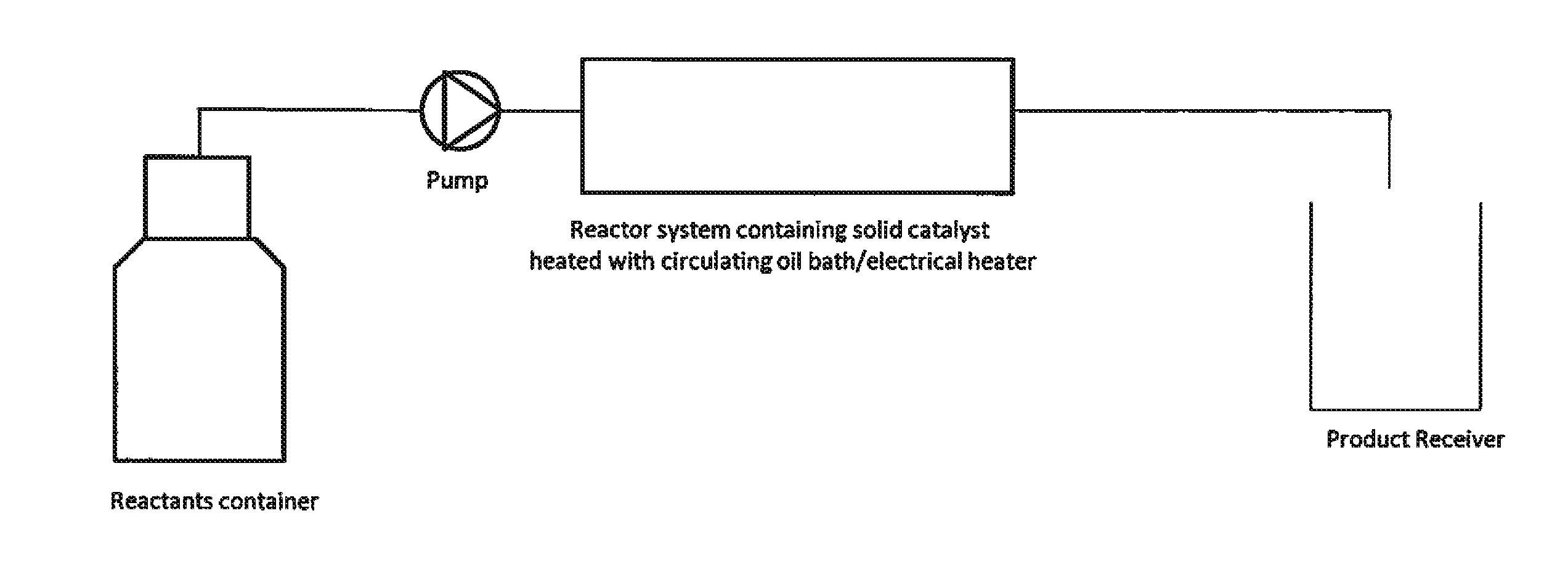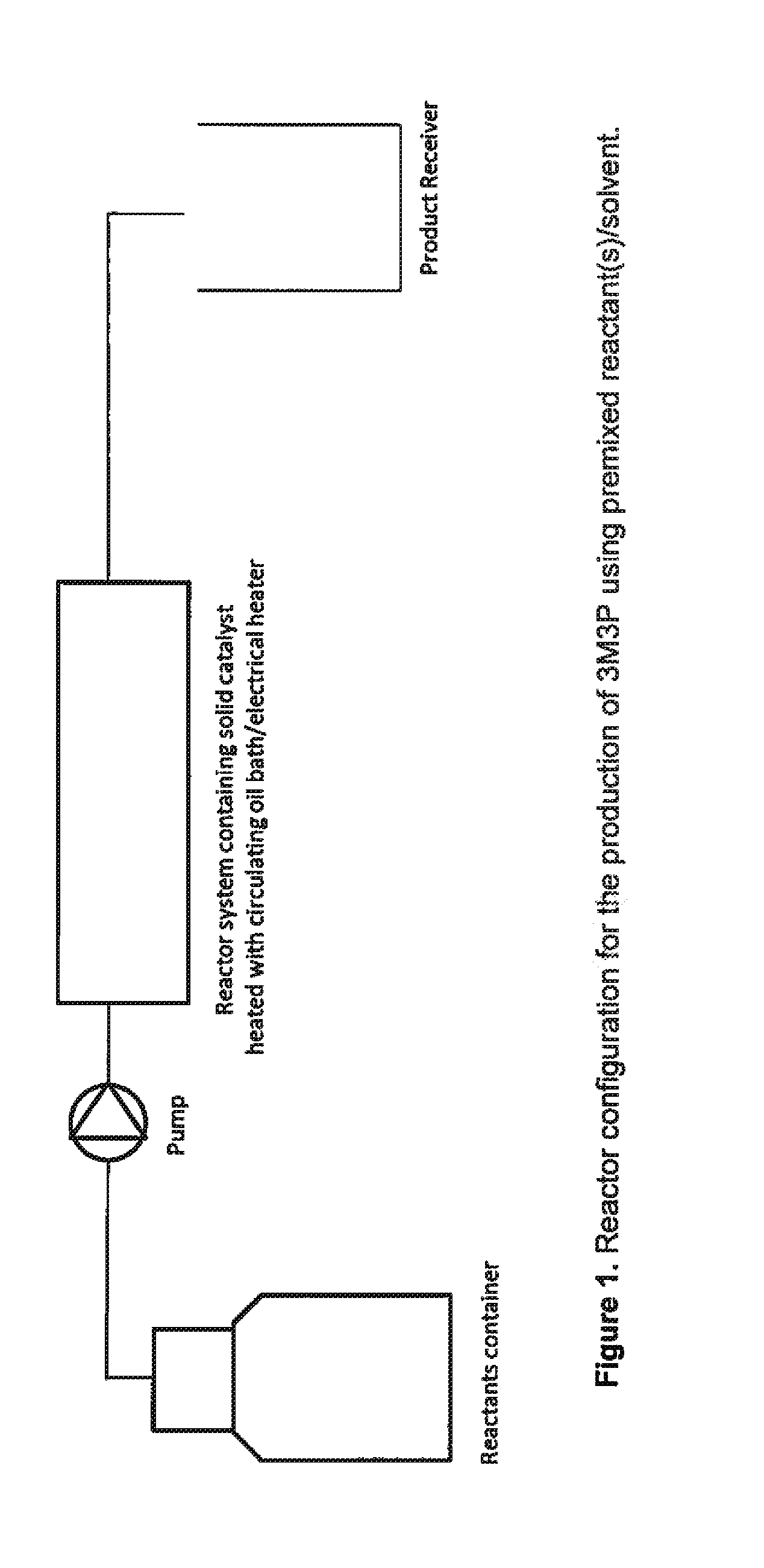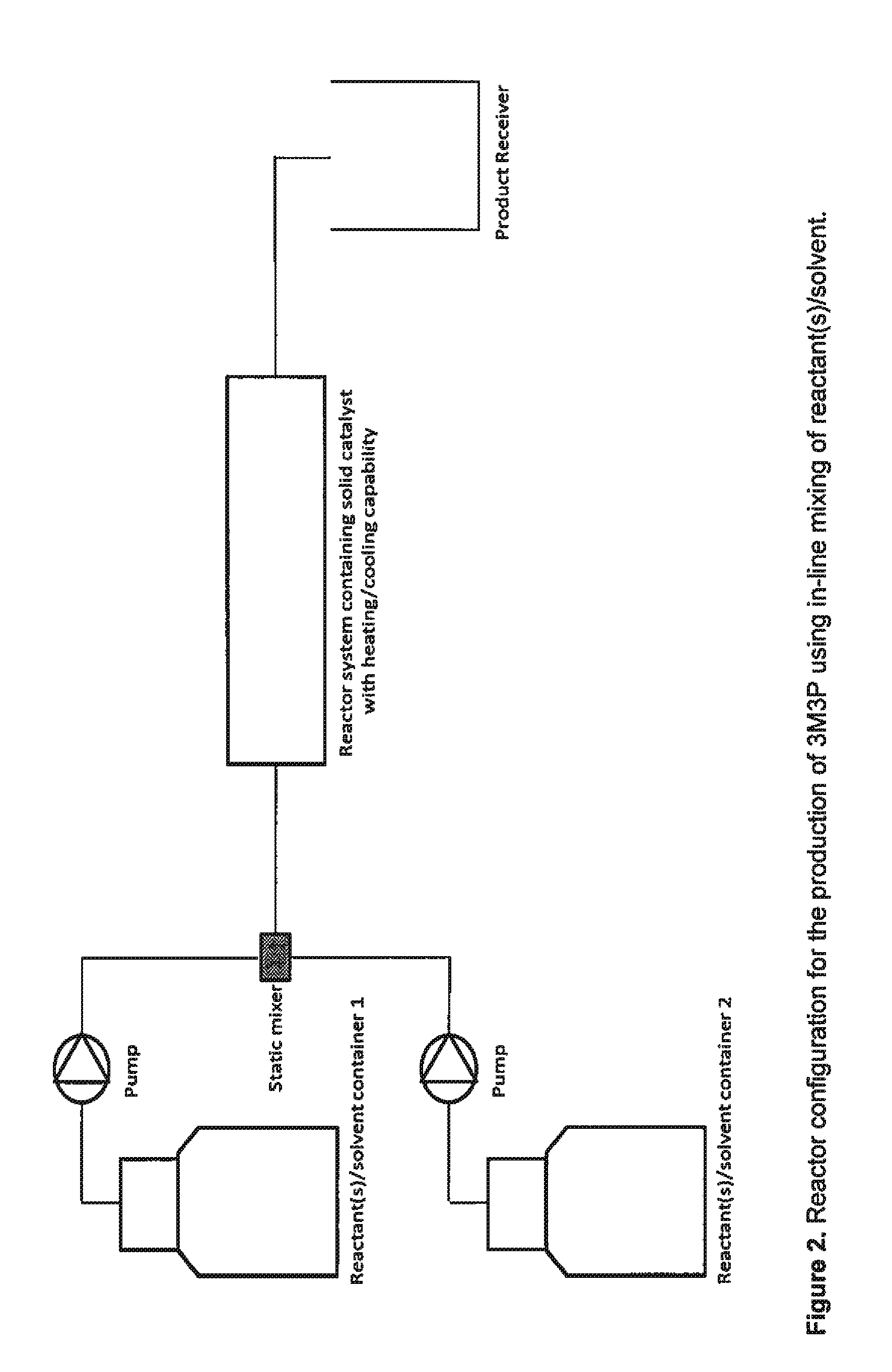Green process for producing 3-methyl-3-pentene-2-one
- Summary
- Abstract
- Description
- Claims
- Application Information
AI Technical Summary
Benefits of technology
Problems solved by technology
Method used
Image
Examples
examples
Synthesis of 3M3P in a Micro Reactor Using Solid Acid Catalyst
[0029]2.5 g of solid acid catalyst supported on polymeric resin is packed into a micro reactor of length 20 cm and inner channel diameter 5.3 mm. A mixture of acetaldehyde and methyl ethyl ketone with mole ratio of 1:6 is fed at 0.05 ml / min into the micro reactor which is maintained at 65-70° C. The 3M3P yield (analyzed by GC) is 82 (mol / mol) based on acetaldehyde and 85 (mol / mol) based on methyl ethyl ketone. The residence or reaction time in the micro reactor is ˜1 hour. Mass efficiency under these conditions for 40 hours of continuous operation is ˜64%.
Synthesis of 3M3P in a Micro Reactor Using Solid Acid Catalyst
[0030]2.5 g of solid acid catalyst supported on polymeric resin is packed into a micro reactor of length 20 cm and inner channel diameter 5.3 mm. A mixture of acetaldehyde and methyl ethyl ketone with mole ratio of 1:3 is fed at 0.05 ml / min into the micro reactor which is maintained at 120° C. The 3M3P yield (...
PUM
| Property | Measurement | Unit |
|---|---|---|
| Temperature | aaaaa | aaaaa |
| Fraction | aaaaa | aaaaa |
| Pressure | aaaaa | aaaaa |
Abstract
Description
Claims
Application Information
 Login to View More
Login to View More - R&D
- Intellectual Property
- Life Sciences
- Materials
- Tech Scout
- Unparalleled Data Quality
- Higher Quality Content
- 60% Fewer Hallucinations
Browse by: Latest US Patents, China's latest patents, Technical Efficacy Thesaurus, Application Domain, Technology Topic, Popular Technical Reports.
© 2025 PatSnap. All rights reserved.Legal|Privacy policy|Modern Slavery Act Transparency Statement|Sitemap|About US| Contact US: help@patsnap.com



